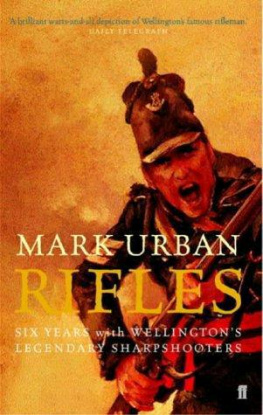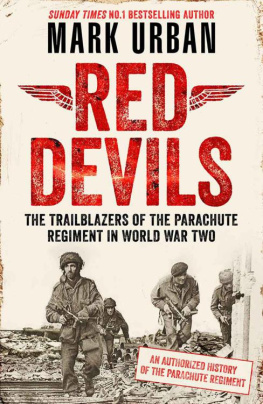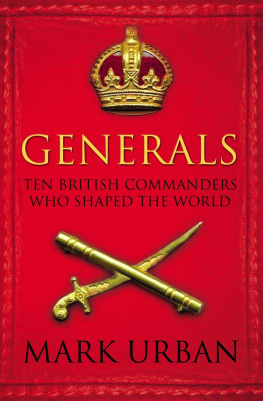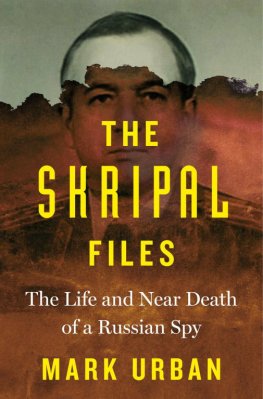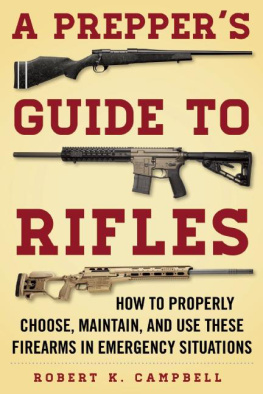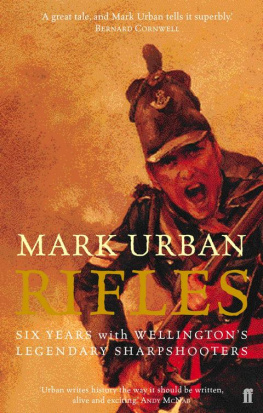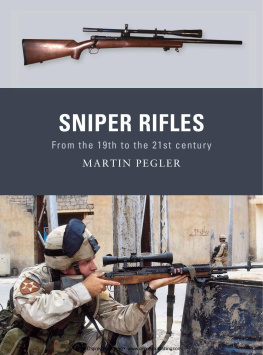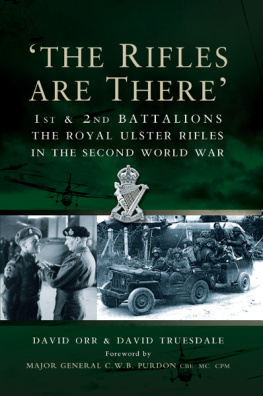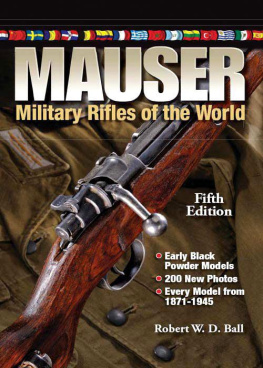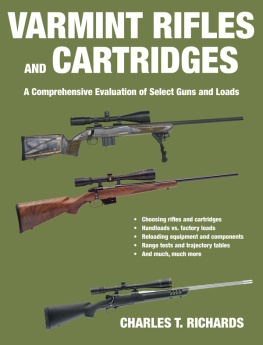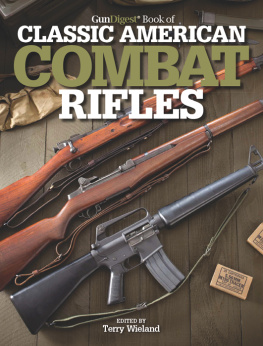Mark Urban - Rifles
Here you can read online Mark Urban - Rifles full text of the book (entire story) in english for free. Download pdf and epub, get meaning, cover and reviews about this ebook. year: 2004, publisher: Faber & Faber, genre: Detective and thriller. Description of the work, (preface) as well as reviews are available. Best literature library LitArk.com created for fans of good reading and offers a wide selection of genres:
Romance novel
Science fiction
Adventure
Detective
Science
History
Home and family
Prose
Art
Politics
Computer
Non-fiction
Religion
Business
Children
Humor
Choose a favorite category and find really read worthwhile books. Enjoy immersion in the world of imagination, feel the emotions of the characters or learn something new for yourself, make an fascinating discovery.
- Book:Rifles
- Author:
- Publisher:Faber & Faber
- Genre:
- Year:2004
- Rating:3 / 5
- Favourites:Add to favourites
- Your mark:
- 60
- 1
- 2
- 3
- 4
- 5
Rifles: summary, description and annotation
We offer to read an annotation, description, summary or preface (depends on what the author of the book "Rifles" wrote himself). If you haven't found the necessary information about the book — write in the comments, we will try to find it.
Rifles — read online for free the complete book (whole text) full work
Below is the text of the book, divided by pages. System saving the place of the last page read, allows you to conveniently read the book "Rifles" online for free, without having to search again every time where you left off. Put a bookmark, and you can go to the page where you finished reading at any time.
Font size:
Interval:
Bookmark:
Six Years with Wellingtons Legendary Sharpshooters
MARK URBAN

for my beloved Sol
The illustrations are reproduced by kind permission of: The National Army Museum (1a, 10b, 14a); the Trustees of the Royal Green Jackets Museum (2, 3, 5a, 5b, 5c, 5d, 6c, 15a); AKG London (15b); Mike Fitzgerald and Sue Law (1b, 1c originally displayed at http://www-personal.usyd.edu.au/~slaw/SuesPage/baker.htm).
The 95th Rifles became the British Armys best-known regiment at a time of some very potent national myths. Wellingtons riflemen have found a niche in the military historical pantheon alongside Cromwells Ironsides or the Desert Rats.
In modern times they have been lionised by popular culture in novels as well as television drama. C. S. Forester featured riflemen in his books, and Bernard Cornwells Sharpe series has brought tales of the Green Jackets derring-do to millions.
It is apparent then that their exploits have been recounted in more or less embroidered forms quite a few times before. Surprisingly, though, nobody has ever written a proper history of the regiment, and in particular of its 1st Battalion through the period of maximum drama 180915. A colonel in the Rifle Brigade, Willoughby Verner, attempted to tell the full story of all three battalions of his regiment, but never completed his narrative, which ends abruptly two years before the campaigns do.
Whats more, although Verners efforts were deeply impressive for their time, he began publishing his history in 1912. It was a very different age and he wrote for the glory of his regiment. Although he was prepared to confront a few difficult issues, Verner self-censored in a way that would be unacceptable to most readers today.
I knew that if I was to push this narrative well beyond Verner or any other previous account, I would have to exploit many new sources of information, as well as looking again at the old ones. My starting point was the existing published memoirs of several soldiers of the 95th, as well as Verners account.
Then I was able to get to most of Verners working papers, which allowed me to revisit his research, including some vital primary sources that had for many years been unavailable to other writers. After that I dug out some other primary material such as letters or journals that he did not have access to and which has never been used in published form before. Then the various claims of authors or diarists had to be checked against official records, such as the Muster Lists or Casualty Returns at the Public Record Office in Kew. Having performed all of these tasks, I had to search for the French Army version of various key engagements, in order to try to gauge the real effectiveness of the Rifles.
After going through all of these different sources, I needed to find a coherent way of telling the 95ths story. I chose to write it as the saga of the men who embarked at Dover on 25 May 1809. This really gets to the core of Rifles mythology and to all of the legendary regimental characters. There were various compromises inherent in this decision not least that some epic moments in the year prior to this, as well as the stories of the 2nd and 3rd Battalions, could not be told in great detail. Be that as it may, the 1st Battalion in May 1809 was a substantially different unit to the one that had fought a few months earlier and it is the interaction between veterans and newcomers that forms a vital subtext to the early part of the book. Also, I have mentioned the 2nd and 3rd Battalions most celebrated exploits in the campaign.
Many soldiers stories are told in this book, but six individuals are flagged up at the start. This book is not the story of these six men per se , but their fate provides a useful reference point as the narrative unfolds.
In recounting the six-year journey to Waterloo with them it is also my aim to give the lay reader a great deal of information about the realities of life in Wellingtons Army and to establish the 95ths pivotal role in creating what we might now recognise as a modern British soldier. It is not a general history of the Iron Dukes campaigns nor of soldiering in the Napoleonic era, so the wider themes are always tackled through the experience of soldiers of the 95th Rifles. I make no apology for dispatching the Battle of Salamanca, perhaps Wellingtons greatest battle, in a few short sentences, since the 1st/95th played almost no part in it.
The result is, I hope, an account of these campaigns that shears away the distortions or recycling of other authors, providing a vivid, truthful account of how these extraordinarily tough men lived, fought and died. It is inevitable, I think, when going back to so many primary sources, that much of the new material that comes to light concerns issues that later authors wanted to screen out such as cowardice, theft or bungling. Because of this, some who rush to judgement may see my book as a debunking or knocking job on the 95th. It is certainly not intended as such, and I hope that my admiration for the courage, stoicism and thoughtfulness of many of its officers and men is clear throughout.
I owe many people a debt of gratitude. My editor at Newsnight , George Entwistle, has to be thanked for allowing me to embark on the journey in the first place, and my agent Jonathan Lloyd for making sure it was worth my while to do so! Phyllis Mendoza started me off with a very kind gift of several Rifles memoirs that her late husband had collected.
Lieutenant General Sir Christopher Wallace was the key that opened the door of the Royal Green Jackets Archive in Winchester for me. Once there, I relied time and again on the extraordinary recall and patience of Major Ron Cassidy who, in retirement, administers this vital resource as a labour of love for his regiment. It was here that Verners notes and many other vital accounts were found.
For some new material, I have a debt to Caroline Craufurd, a descendant of Major General Robert Craufurd, who helped me to much information about that tormented figure. In working on the official records, I sometimes deployed the skills of professional researchers in the shape of Eileen Hathaway and Roger Nixon. George Caldwell and Robert Cooper gave freely of their particular expertise on the 95th. On the French accounts, Cyril Canet assisted in the Vincennes archives. John Montgomery, librarian of the Royal United Services Institute in London, rallied to the cause this time just as energetically as he did with my last book.
Throughout the research, I benefited enormously from the kindness of John Sandler, the leading collector of Napoleonic literature in Britain, whose library, amassed over more than sixty years, contains fifteen thousand volumes. I was able to consult this vast resource at will and draw on his great expertise. The Sandler Collection was particularly useful for digging up early French published accounts.
The task of licking my tract into shape fell to Julian Loose and Angus Cargill at Faber and I am delighted to complete this fourth collaboration with that house. Dr Rory Muir once again did me the enormous favour of vetting my text for more egregious errors but of course I alone take responsibility for any that remain. Many others too numerous to mention have shared their knowledge or books, often through virtual communities such as the Napoleon Series internet forum.
Finally I must also thank those who have had to put up with me while I got this obsession out of my system: my wife Hilary, as well as daughters who showed an understanding far in advance of their years, Isabelle and Madeleine.
Mark Urban
Font size:
Interval:
Bookmark:
Similar books «Rifles»
Look at similar books to Rifles. We have selected literature similar in name and meaning in the hope of providing readers with more options to find new, interesting, not yet read works.
Discussion, reviews of the book Rifles and just readers' own opinions. Leave your comments, write what you think about the work, its meaning or the main characters. Specify what exactly you liked and what you didn't like, and why you think so.

